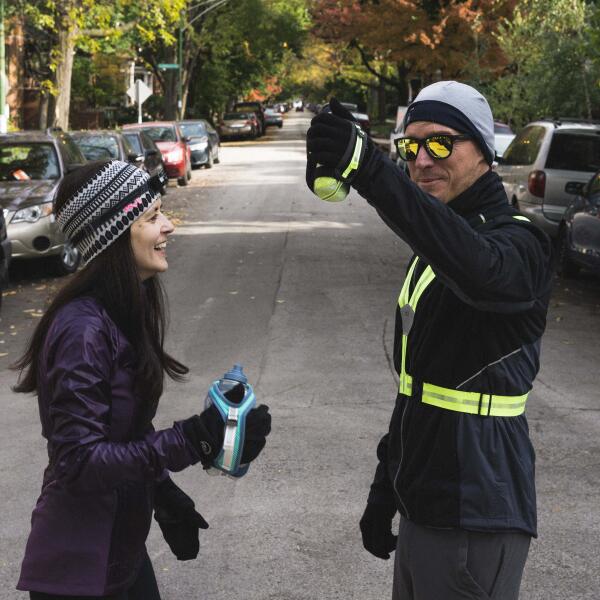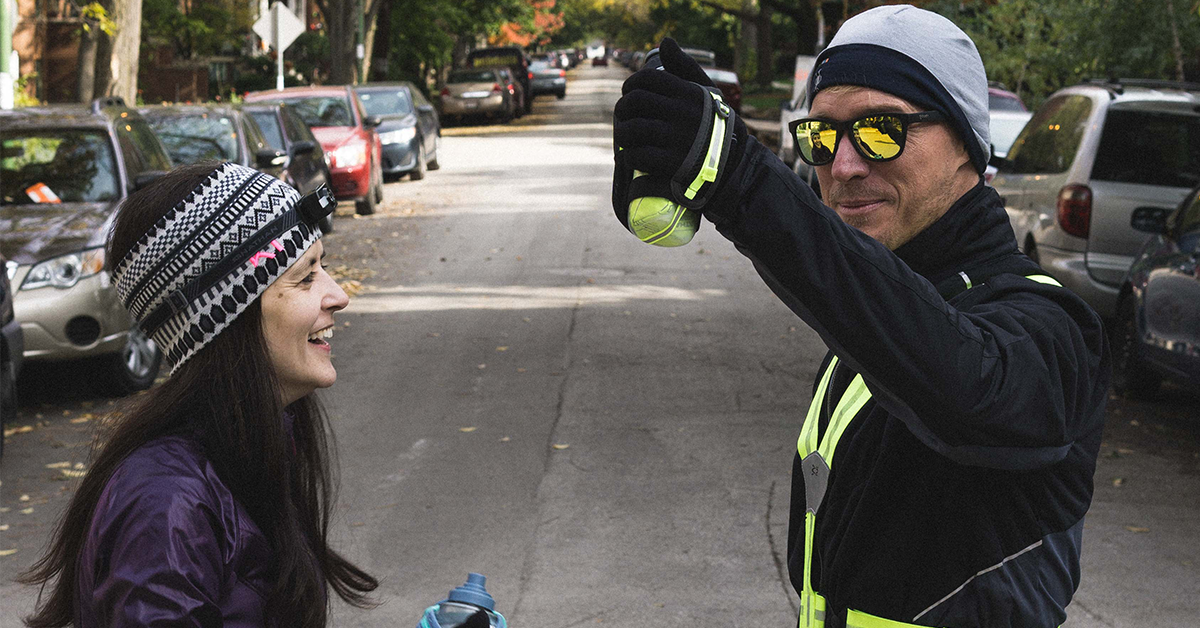Essential Accessories for Surviving a Chicago Winter Running Season


Different temperatures call for different running accessories.
And different people call for different running accessories. This is primarily due to genetics.
Why are you talking about genetics?
Some of us run "hot" and warm up quickly and stay comfortable while others run "cold" and never quite get to a pleasant body temperature. This is mainly controlled by your thyroid. The thyroid, an endocrine gland just above the collarbone, controls your body temperature. Due to you genetic predisposition, if your body produces too much thyroid hormone, body temperature rises, thus you'll run "hot", and vice versa.
Other variables go into regulating body temperature such as your ratio of brown adipose tissue(brown fats), the same fats used by hibernating mammals, which produces heat in its thermoregulation function, and white adipose tissue(white fats), which is accumulated primarily by diet and does not produce heat.
With that being said, in "cold" temperatures, some may find it necessary to gear up with essentials. Others may not.
Essential accessories in cold conditions: 35-50° degrees
Hat or headband: Pictured: Smartwool NTS 250 Reversible Headband
In cold temperatures, we recommend a light hat or headband to cover your exposed skin that is susceptible to colder temperatures as you build speed during your run and create windchill.
Essential accessories for colder conditions: 20-35° degrees
As the above accessories vary in use from person to person, these accessories are necessary for any runner going on their run in "colder" conditions.
Hat or headband: Pictured: Smartwool NTS250 Cuffed Beanie
A merino wool hat should be used to keep heat trapped at head-level.as you know, up to 70% of heat is lost through the head.
This beanie is a do-anything, all-season essential made with merino wool and with an adjustable ear band for more or less heat, and clean seams for a no-bulk fit.
Medium weight gloves or mittens: Pictured: Manzella Hatchback Gloves
A heavier glove or mitten is recommended to prevent frostbite.
Essential accessories for the coldest conditions: 20° degrees and below
When conditions turn to "coldest", you're not just downright doing yourself a disservice, you're putting yourself in potential danger if you don't gear up with these accessories before your run.
Before you head out, check your weather app and don't just look at temperature. Runners should consider wind chill — the temperature it "feels like" outside based on the rate of heat loss from exposed skin, according to the National Weather Service.
Take a look at this chart.
The chart below shows how long you can be exposed to certain temperatures before resulting in frostbite. For example, a temperature of 0 degrees Fahrenheit and a wind speed of 15 mph creates a wind chill temperature of -19 degrees Fahrenheit. Under these conditions frost bite can occur in just 10 minutes.
Below are some products and tips to help you overcome the cold and run comfortably.
First and foremost. Avoid wearing cotton.
Cotton is one of the worst materials you can wear during the winter, because cotton holds moisture and loses its insulating properties. If you sweat, get wet from the snow, or if there's any moisture in the air, the cotton will quickly absorb it and keep it close to your skin, making you feel even colder.
With that being said, we have a few non-cotton, merino wool headwear options.
Hat or headband: Pictured: Smartwool NTS250 Cuffed Beanie
It may just be a myth that 40-45% of body heat is lost through the head (actually about 10%), but exposed ears in frostbite level cold can ruin a run faster than about anything. A merino wool hat should be used to keep heat trapped at head-level. Merino wool wicks moisture away from the skin and suspends the moisture in the weave, and can absorb almost 1/3 of its own weight before making you feel cold or wet.
Balaclava or neck gaiter: Pictured: NTS Mid250 Balaclava
While some seasoned winter runners apply a petroleum based jelly such as Vaseline to their exposed face to prevent wind burn, a balaclava or neck gaiter provide exceptional protection to your raw skin from your cheeks, nose, and neck, down to your chest
Mittens: Pictured: Manzella Adventure 100
Your hands may be more functional in gloves, but your digits will be much warmer in mittens. Mittens offer more warmth since fingers have skin-to-skin contact with each other and can share body heat. Mittens also tend to have a smaller surface area than gloves, which reduces heat loss, so when in doubt, always choose mittens.
For those who just can't do mittens, go for a pair of gloves that tighten at the wrists for seamless warmth where your hands meet your exposed wrists.
Merino wool socks: Pictured: Smartwool PhD Run Ultra Light Mini
Merino wool socks will prevent your feet from getting cold. Nothing will make you want to cut your run short than cold feet.
Visibility: Pictured: Nathan Neutron Fire RX Runners Headlamp
Hydration: Pictured: Nathan Speedraw Plus
In freezing temperatures, depending how long you are running, your water can freeze. Using a handheld will prevent your water from freezing by using the heat of your hand.
Sunglasses: Pictured: Goodr sunglasses
Connect With Us
See the latest from Fleet Feet Chicago